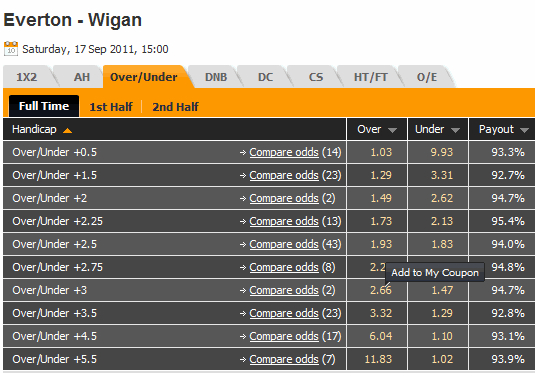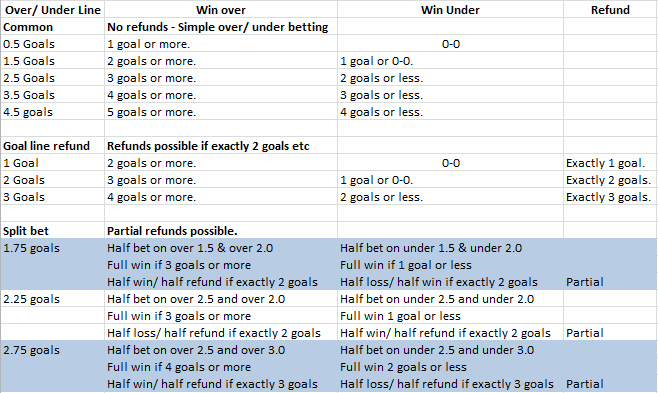.
Whilst the 2017/18 football season in England will be remembered for many things – Man City’s 100 points, Wolves domination of the Championship and of course, little Accrington Stanley taking the League 2 title, for those of us that enjoy betting on the beautiful game, it will be remembered for some very different reasons.
Primarily this is down to some strange statistical quirks we saw throughout the top 4 English Leagues during the 2017/18 season. Stats that can teach us plenty about variance, luck and most of all – the patience needed to make a profit football betting.
Patience for many can be a dirty word when betting – especially from those punters not used to handling losing runs (I understand this – they can be tough!) but the reality is it’s something we all most get to grips with if we ever want to make our betting really pay.
It’s easy when you are winning but you find out the most about yourself and your betting when in a bad patch. After all – even the best punters are not immune to having a bad football season as pro punter Rory Campbell admits to in part 1 of these excellent videos.
So, in today’s email I want to showcase with you some strange stats for the English season in 2017/18, why ‘underdog’ backers suffered a huge drop AND just how you could have made a huge profit blind backing away teams.
(Note – all stats are based on the best odds available on the day of each game and at 10 point level stakes. It also runs up to the end of April – I have been unable to get stats on the last set of fixtures in the 3 lower leagues and last 2 fixtures in the Premier League as yet.)
Why Football Betting Last Season (in England) Was So Strange
One of the biggest statistical quirks witnessed during the 2017/18 season for the top 4 English leagues was the form of what I term ‘underdogs’ away from home – those teams priced at 7/4 and above.
This is a particularly important trend as a lot of pro punters and tipsters regularly focus on value away from home, especially at the bigger prices (so 7/4 and above). Therefore, the form of these teams is vital, yet in 2017/18 we saw a major drop in the number of ‘underdog’ away wins.
To set the scene, for the 10 years prior to the 2017/18 season, below I have listed the average performance of away teams priced at 7/4 and over (if blindly backing all away teams at these odds). As with all the stats in this article, all bets are calculated to 10 point level stakes to win.
Away Teams 7/4 & Over 10 Season Total Loss: -3162 points, ROI -2.1%, 24.9% strike rate
Over an average season, we can reasonably expect to post a 316 point loss at -2.1% ROI and to hit a 24.9% strike-rate.
With only a -2.1% ROI to overcome, it’s easy to see why this is an area of intense focus, because with the right strategy, a profit is there to be made by filtering out unprofitable away underdogs.
Any strategy is always vulnerable to short-term fluctuations (Yes, I will call a season short-term as it’s not a huge data sample) and 2017/18 was a case in point. This is because backing away underdogs during the 2017/18 season generated the following figures:
Away Teams 7/4 & Over 2017/18 Season Total Loss: -1270 pts, ROI -9.2%, 23.2% strike rate
In short, the average points lost rose by 954 points, the ROI dropped 7.1% and the strike-rate by 1.7%.
Whilst a -2.1% ROI might be overcome, it’s very difficult to turn around a -9.2% ROI into profit if backing away teams 7/4 and over.
There were also clear fluctuations across each of the 4 English leagues as follows for these bets 7/4 and over:
Premier League: -370pts , ROI -14.9%, 17.7% strike rate
Championship: -294pts, ROI -7.7%, 24% strike rate
League One: -121pts, ROI -3.2%, 25.4% strike rate
League Two: -485pts, ROI -13.2%, 23.6% strike rate
League 2 was particularly bad with a -13.2% ROI and to put its specific stats in context, the worst season prior to 17/18 for League 2 was 14/15 with -152 points and -3.6% ROI.
When Backing Away Teams Has Been Profitable
To further back up what a strange season 2017/18 was, those of you blindly backing all away teams under 7/4 will conversely have made a fine profit.
That is because if backing all away teams to win at odds under 2.75 (staking 10 points on each bet) in the Premier League , Championship, League One and Two you would have made a profit of 471 points at 8.5% ROI and hit a 48.9% strike-rate.
It’s not very often than you can blindly back favourites away from home in all those leagues and get a nice profit, yet that is exactly what happened in 17/18.
This trend gets stronger if we drop the Premier League and concentrate on the 3 lower leagues.The profit rises to 531 points and the ROI goes up to 11.7%!
What Can We Do About This?
So with all the strange patterns seen in the 2017/18 season, what are we to do as punters?
The first thing when we see trends like this is to ask if anything has changed to influence a lower strike-rate of winners away from home.
Are away teams less prepared, dealing with longer-travel times or banned from taking away supporters with them for example?
The answer to all of these questions is no. To my mind there is no actual logical reason why all of a sudden, away teams at bigger prices are under-performing.
The reason lies with what is termed Variance, which is something we see over relatively small samples of data.
Variance in its most simple terms is the difference from one data set to the mean. For example, if comparing what we made in one season during 2017/18 to what has been achieved over the past 10 seasons as a whole.
…And when comparing the 17/18 data set from the 10 year average we see plenty of variance at play.
One key reason for this is that football games are in the main tight affairs decided by 1 goal. 1-0 is the most common scoreline historically and even in League 2 this season, 67.31% of all games were decided by 1 goal or less.
The margin for error is therefore very slim and it’s easy to see weird trends like this over a small sample size such as one season.
It’s Your Time In The Game, Not Timing That Matters Most
So there you have it, some strange stats from the 2017/18 season and plenty of food for us football punters.
Ultimately, we can expect to realistically see these away trends change in time and no doubt there will be a season soon when we see the opposite apply – A higher proportion of away winners over 7/4 and a lower number under 7/4.
When exactly this will take place is anyone’s guess (unless you have the ability to predict the future) so we must be patient to wait it out until it does.
As one punting pro put it to me lately – it’s not the timing of when you start betting, but your time in betting that matters most.
Because as long as you have a valid long-term method, you might be unlucky based on when you start and the early results but long-term it will all even out in your favour.
As long as you have the patience to STAY IN and ride out quirky stats like seen above.
Why We Recommend Tipsters With Long-Term Records Only
We apply this long-term logic to the tipsters we review and recommend, preferring to judge tipsters over a deep set of stats, rather than a few months here and there.
Any tipster can pick up a few winners by chance over a few weeks or even months, yet it’s only when they have a definitive edge long-term that we can rely on them to make us money.
It’s why the average length of time a SBC Hall of Fame rated tipster has been going for is over 4 years, because these are the tipsters that have proven themselves profitable long-term.
After all, were we to judge a tipster over a shorter period of time, we might find ourselves recommending tipsters who have an edge simple due to luck, rather than skill.
A football tipster that made a profit by backing away teams under 7/4 last season would be a prime example. Do they have a real edge or were they just lucky given the higher than average proportion of winners at these odds last season? Ultimately, only time will really tell on that front.
So, if you are after long-term, sensible advice on the best tipsters with proven records making money betting, do consider a Smart Betting Club membership.
You can get started instantly with a 90 day anytime money back guarantee to boot.
Sign-up To The Smart Betting Club
Best Regards,
Peter Ling
Smart Betting Club Owner/Founder







